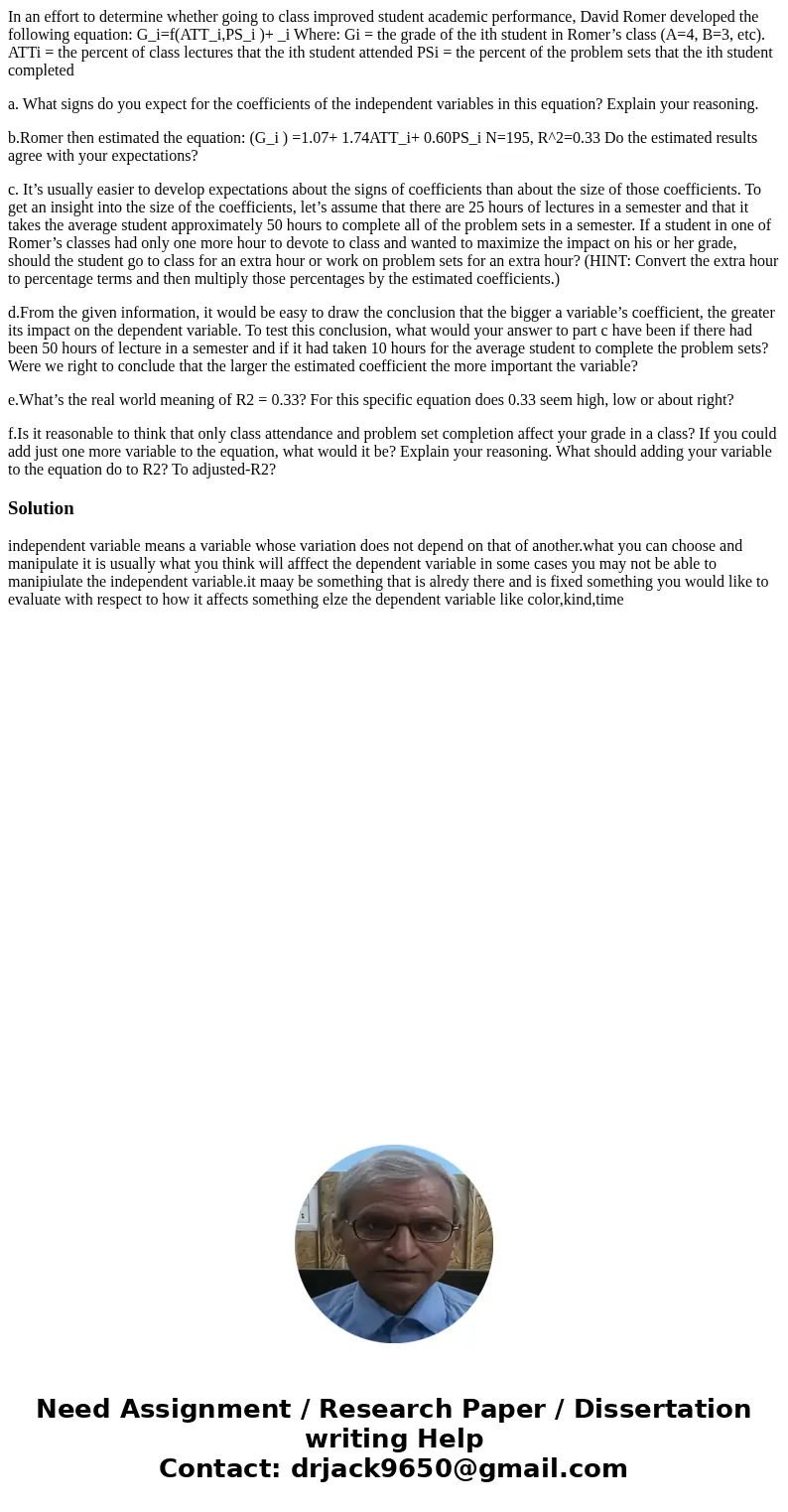In an effort to determine whether going to class improved st
In an effort to determine whether going to class improved student academic performance, David Romer developed the following equation: G_i=f(ATT_i,PS_i )+ _i Where: Gi = the grade of the ith student in Romer’s class (A=4, B=3, etc). ATTi = the percent of class lectures that the ith student attended PSi = the percent of the problem sets that the ith student completed
a. What signs do you expect for the coefficients of the independent variables in this equation? Explain your reasoning.
b.Romer then estimated the equation: (G_i ) =1.07+ 1.74ATT_i+ 0.60PS_i N=195, R^2=0.33 Do the estimated results agree with your expectations?
c. It’s usually easier to develop expectations about the signs of coefficients than about the size of those coefficients. To get an insight into the size of the coefficients, let’s assume that there are 25 hours of lectures in a semester and that it takes the average student approximately 50 hours to complete all of the problem sets in a semester. If a student in one of Romer’s classes had only one more hour to devote to class and wanted to maximize the impact on his or her grade, should the student go to class for an extra hour or work on problem sets for an extra hour? (HINT: Convert the extra hour to percentage terms and then multiply those percentages by the estimated coefficients.)
d.From the given information, it would be easy to draw the conclusion that the bigger a variable’s coefficient, the greater its impact on the dependent variable. To test this conclusion, what would your answer to part c have been if there had been 50 hours of lecture in a semester and if it had taken 10 hours for the average student to complete the problem sets? Were we right to conclude that the larger the estimated coefficient the more important the variable?
e.What’s the real world meaning of R2 = 0.33? For this specific equation does 0.33 seem high, low or about right?
f.Is it reasonable to think that only class attendance and problem set completion affect your grade in a class? If you could add just one more variable to the equation, what would it be? Explain your reasoning. What should adding your variable to the equation do to R2? To adjusted-R2?
Solution
independent variable means a variable whose variation does not depend on that of another.what you can choose and manipulate it is usually what you think will afffect the dependent variable in some cases you may not be able to manipiulate the independent variable.it maay be something that is alredy there and is fixed something you would like to evaluate with respect to how it affects something elze the dependent variable like color,kind,time

 Homework Sourse
Homework Sourse